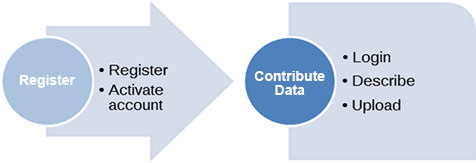ELRC response to COVID-19 crisis
ELRC is participating in a collaborative COVID-19 initiative, which gathers language resources supporting the development of urgently needed applications and services in relation to the pandemic. Check out the resources collected so far.
Welcome to the ELRC-SHARE repository!The ELRC-SHARE repository is used for documenting, storing, browsing and accessing Language Resources that are collected through the European Language Resource Coordination and considered useful for feeding the CEF Automated Translation (CEF.AT) platform. If you want to contribute resources, all you have to do is
click here
and go on to describe and upload your data with a simple form.
 All data resources gathered by this initiative will be provided to the European Commission for use in the CEF.AT platform. Do you represent a CEF generic services project? Please read these short guidelines. The Data Protection Record for the ELRC-SHARE repository is available here. |

